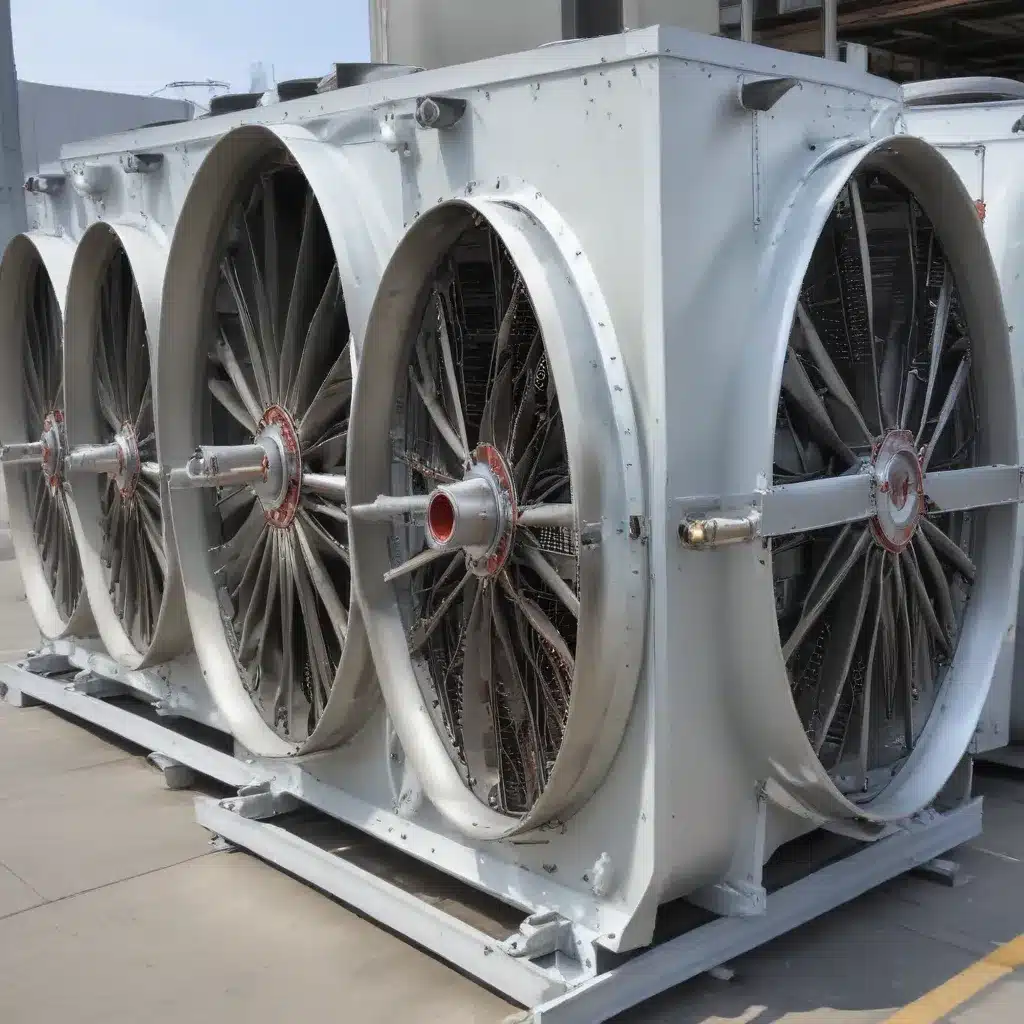
Unraveling the Secrets of Optimal Air-Cooled Heat Exchanger Design
As a seasoned expert in the field of air-cooled heat exchangers, I’ve witnessed firsthand the critical role that structural parameters play in determining the overall efficiency and performance of these essential thermal management systems. From the intricate tube bundle configurations to the strategic placement of air inlets and outlets, every design element can have a profound impact on how effectively heat is transferred between the process fluid and the surrounding air.
In this comprehensive article, we’ll delve deep into the multifaceted world of air-cooled heat exchanger design, exploring the various structural parameters that can make or break the efficiency of these ubiquitous industrial workhorses. Whether you’re an engineer tasked with optimizing a new system or a plant manager seeking to squeeze every last drop of performance from an existing unit, the insights and strategies presented here will provide you with a solid foundation for making informed decisions.
The Anatomy of an Air-Cooled Heat Exchanger
At the heart of an air-cooled heat exchanger lies the tube bundle, a meticulously arranged array of small-diameter tubes that facilitate the heat transfer process. The design and configuration of this tube bundle are critical, as they directly influence both the heat transfer capacity and the pressure drop experienced by the airflow.
One of the key structural parameters to consider is the number of tubes within the bundle. As the research from MDPI has shown, increasing the number of tubes can significantly enhance the overall heat transfer capacity, but this comes at the cost of a higher pressure drop across the exchanger. This tradeoff between heat transfer and pressure drop must be carefully balanced to optimize the exchanger’s performance and energy efficiency.
Another crucial parameter is the tube spacing, which refers to the distance between individual tubes within the bundle. The study from Symmetry found that increasing tube spacing can reduce the overall pressure drop, but this comes at the expense of decreased heat transfer capacity and a less compact design. Striking the right balance between these competing factors is essential for achieving optimal performance.
The Importance of Airflow Management
Beyond the tube bundle, the way in which air is directed through the heat exchanger can also have a substantial impact on its efficiency. The air inlet and outlet configuration plays a critical role in ensuring that the airflow is distributed evenly across the tube bundle, minimizing dead zones and maximizing heat transfer.
The research from Science Direct highlights the significance of the air crossflow tube bundle, where the air flows perpendicular to the direction of the process fluid. This arrangement can significantly enhance the heat transfer capacity, but it also leads to a higher pressure drop. Careful optimization of the air inlet and outlet geometry, as well as the orientation of the tube bundle, is crucial for achieving the desired balance between heat transfer and pressure drop.
Optimizing for Real-World Conditions
Of course, the performance of an air-cooled heat exchanger isn’t solely dependent on its structural parameters – the operating conditions and environmental factors also play a crucial role. The study from Nature emphasizes the importance of considering factors such as ambient temperature, airflow rate, and process fluid characteristics when designing and optimizing these systems.
By taking a holistic approach that considers both the structural and operational parameters, engineers can develop air-cooled heat exchangers that are not only highly efficient but also resilient to the real-world challenges they may face. This comprehensive understanding is essential for ensuring that these critical components continue to operate at peak performance, delivering reliable and cost-effective thermal management solutions across a wide range of industries.
Balancing Performance and Efficiency
One of the key takeaways from the research is that there is often a delicate balance between heat transfer performance and pressure drop, or energy efficiency. Increasing the number of tubes in the bundle, for instance, can enhance the overall heat transfer capacity, but it also leads to a higher pressure drop, which in turn requires more energy-intensive fans or blowers to overcome.
Similarly, adjusting the tube spacing can have a significant impact on both heat transfer and pressure drop. Wider tube spacing may reduce the pressure drop, but it also reduces the heat transfer area, potentially compromising the exchanger’s overall efficiency.
To optimize this balance, engineers must carefully consider the specific application requirements, operating conditions, and energy consumption constraints. By leveraging the insights from the research and applying a data-driven, analytical approach, they can identify the ideal combination of structural parameters that delivers the best possible performance while maintaining a high level of energy efficiency.
Putting Theory into Practice
Of course, the real-world implementation of these design principles can be complex, with a myriad of factors to consider. That’s why it’s essential for air-cooled heat exchanger experts to stay up-to-date with the latest research and to continuously refine their design and optimization strategies.
At https://www.aircooledheatexchangers.net/, we pride ourselves on our deep understanding of these principles and our ability to translate them into practical, real-world solutions. Whether you’re designing a new air-cooled heat exchanger or looking to optimize an existing system, our team of seasoned experts can provide the guidance and support you need to ensure optimal performance and efficiency.
Conclusion
The design of air-cooled heat exchangers is a delicate balance of structural parameters, airflow management, and operational considerations. By leveraging the insights and strategies presented in this article, engineers and plant managers can unlock the full potential of these critical thermal management systems, driving improvements in efficiency, reliability, and cost-effectiveness across a wide range of industrial applications.
Remember, the key to success lies in a deep understanding of the underlying principles and a willingness to adapt and innovate as new technologies and research emerge. With the right approach, air-cooled heat exchangers can continue to be the backbone of efficient, sustainable, and high-performing thermal management solutions for years to come.

